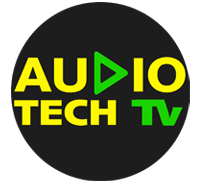Welcome to the electrifying world of music production, where creativity and technology collide to bring your musical dreams to life. In this blog post, we’ll embark on a journey through the rhythmic realms of FL Studio and Ableton Live, two very popular digital audio workstations (DAW) for home studio producers. Whether you’re a budding musician, a seasoned producer, or just a curious soul, buckle up as we explore the unique features and differences that set FL Studio and Ableton Live apart.
FL Studio: The Groove Commander
FL Studio, affectionately known as Fruity Loops, has been a long-standing favorite among music producers for its user-friendly interface and robust set of features. Imagine it as your trusty commander leading the charge in the battle for beats. FL Studio boasts a step sequencer that allows you to easily create drum patterns, making it a go-to choice for those who thrive on precise control over every beat. Its colorful and intuitive layout is like a musical canvas, where you can paint your sonic masterpiece with a diverse array of virtual instruments and plugins.
Ableton Live: The Live Performance Maestro
On the opposite side of the ring stands Ableton Live, celebrated for its prowess in live performances and real-time manipulation of sounds. If FL Studio is the meticulous strategist, Ableton Live is the dynamic performer. The Session View in Ableton Live enables users to trigger and arrange clips in real-time, making it an ideal choice for DJs and artists who want to improvise on stage. The software’s time-stretching and warping capabilities further enhance its live performance capabilities, ensuring seamless transitions between tracks.
Round 1: Interface and Workflow
FL Studio’s sleek and colorful interface invites users to dive into the world of music production with ease. The step sequencer and pattern-based workflow allow for a straightforward approach to building beats and melodies. Ableton Live, with its dual-view interface (Arrangement and Session), offers a unique and flexible workspace for both studio production and live performances. The learning curve for each DAW largely depends on personal preferences and the preferred style of music production.
Round 2: Virtual Instruments and Plugins
Both FL Studio and Ableton Live come equipped with a vast library of virtual instruments and plugins. FL Studio’s native plugins, such as Sytrus and Harmor, provide powerful synthesis options. Ableton Live, on the other hand, is renowned for its collection of high-quality built-in effects and instruments, including Operator and Simpler. The choice between the two may come down to personal taste and the specific sound palette you’re aiming to achieve.
Round 3: Performance and Stability
When it comes to handling large projects and ensuring stability during intense creative sessions, both FL Studio and Ableton Live have proven their mettle. FL Studio’s PDC (Plugin Delay Compensation) and multitouch support enhance its performance capabilities, while Ableton Live’s robust warping engine and efficient CPU management contribute to its reputation for stability during live performances.
Conclusion:
In the end, the choice between FL Studio and Ableton Live boils down to your unique preferences, workflow, and musical goals. FL Studio excels in precision and pattern-based composition, making it an excellent choice for those who enjoy meticulous beat-making. Ableton Live, with its emphasis on live performance and real-time creativity, appeals to artists seeking an immersive and dynamic experience on stage.
Whether you’re swayed by FL Studio’s intuitive interface or captivated by Ableton Live’s live performance capabilities, both DAWs offer a ticket to the thrilling world of music production. So, grab your headphones, fire up your chosen DAW, and let the beat battle begin!
